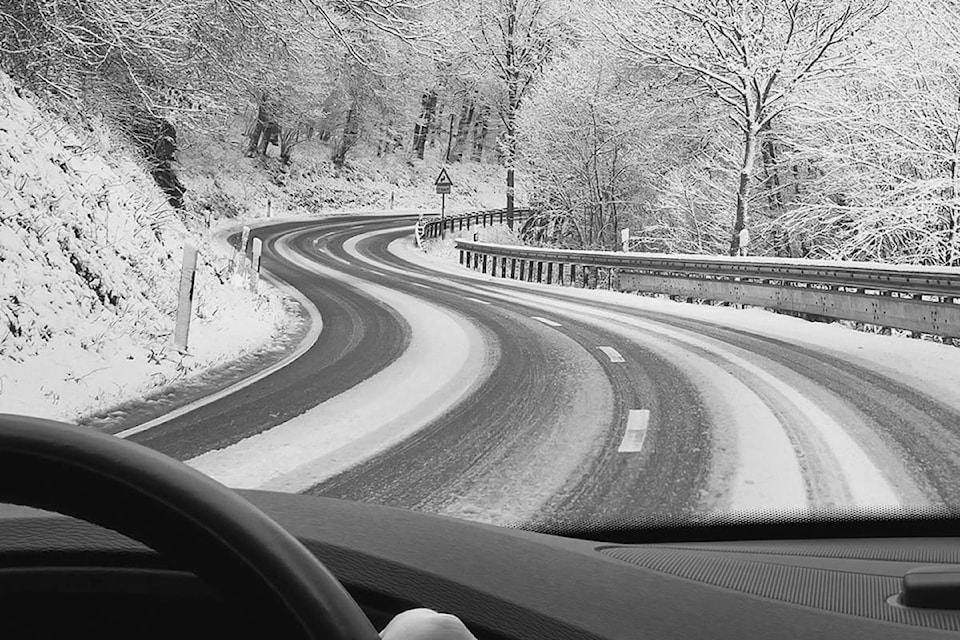When the first signs of winter come falling from grey skies, it is important to remember safe driving protocols for potentially slick conditions.
Central Alberta got a lasting blast of wintry conditions over the weekend, beginning with wind and rain the afternoon of Oct. 25 which turned into snow overnight.
The rain and snow mix left the streets slick with ice making drivers cautions when taking to the road.
Snowy conditions have persisted through to Monday morning, where flurries are expected throughout the day.
Alberta Motor Association (AMA) says the first snowfall means drivers are required to think quickly and remember the rules for good winter driving.
When driving in wintry conditions, one tip is to slow down.
AMA says black ice forms between the temperatures of 4C and -4C.
“Most times, a driver can’t see black ice. As a general rule, if the pavement looks shiny and black instead of grey-white, slow down,” the AMA websites says.
Road conditions can change quickly in Alberta. It is recommended to drive proactively, reduce the speed and leave more space between vehicles.
AMA also strongly recommends not using cruise control when the roads are wet or icy.
“Using cruise control when there is a build-up of water and ice can cause your vehicle to hydroplane (a loss of control due to a layer of water between your tires and the road). Remember, cruise control is designed for ideal road conditions.”
The last tip AMA gives is to check weather and road reports before leaving home.
Information on highway conditions can also be found through social media.
Before leaving home, Alberta Highways says to ensure all windows, mirrors, lights and licences plates are cleared of snow and ice.
Alberta Highways also recommends having an emergency kits in the car. The kit should include items like a fire aid kit, fire extinguisher, blanket, extra clothing and footwear, sand or kitty litter and booster cables among other items.
It is also recommended to keep the vehicle fuelled up in case of an emergency.
More information on winter driving can be found at www.alberta.ca/safer-winter-highways.aspx. Up to date road conditions can also be found on 511.alberta.ca
